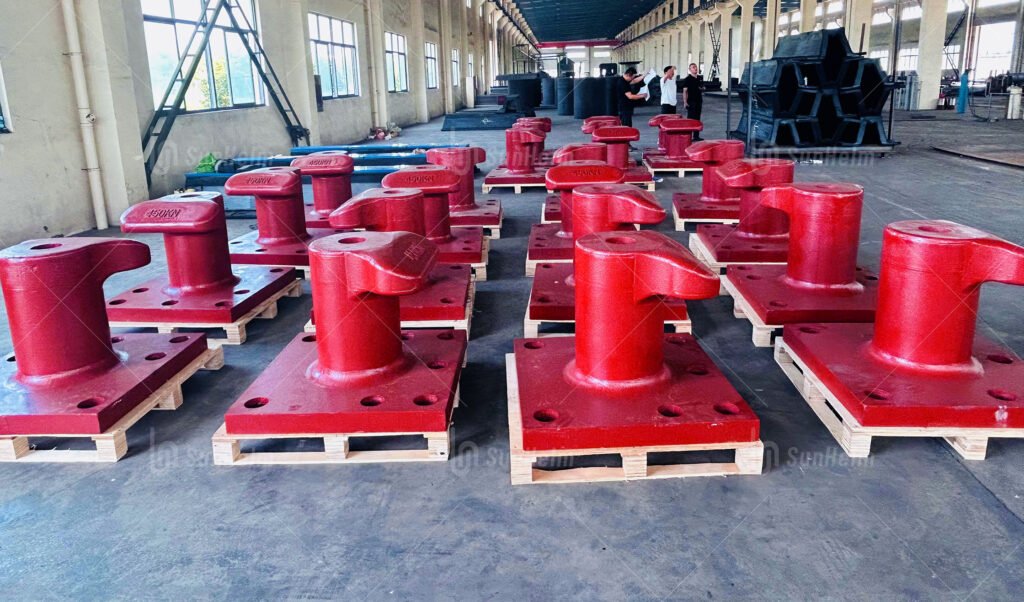Why Inspecting and Maintaining Marine Bollards Is Urgent?
Think about this: you’re docking a vessel, sea conditions are choppy, and suddenly marine bollards give way—vessel drifts, string breaks, disaster unfolds. Just this happened in Mississippi when a bollard failed during high winds, letting a drillship drift into another vessel—causing $5 million in damage. That’s why now is the time to take marine bollard maintenance seriously—not later.
What Is a Marine Bollard?
Marine bollards are sturdy metal posts fixed on docks or quays that secure a ship’s mooring lines. They must handle extreme loads during berthing and quick changes in tidal pressure.

How Often Should You Inspect Them?
— • Monthly for visual checks, especially in marine or industrial settings.
— • Comprehensive inspections every 6–12 months to catch structural issues early.
8-Step Inspection & Maintenance Checklist
- Visual Damage Check
Inspect for dents, cracks, surface penetration, worn-down rims or battered tops. - Paint & Corrosion Review
Look for chipped paint or corrosion, especially on galvanized surfaces—strip and reheat as necessary. - Thickness Measurement
Compare current barrel thickness against manufacturer specs; discuss any deviations > 2 mm with your supplier. - Anchor Bolt Torque Check
Use a torque wrench to ensure bolts are tightened correctly—no loosening allowed. - Bolt Corrosion & Surface Coating Inspection
Confirm galvanization is intact; touch up with zinc-coated spray if needed. - Grout Condition Under the Bolt Flange
Look for grout cracking or loss under the bollard—regrout if required. - Periodic Load Testing
Perform pull tests at 110% of the working load periodically—an essential part of verifying safety. - Documentation
Keep records of all inspections, measurements, maintenance activities, and torque values—ideal for spotting trends and preparing warranty claims.
Maximize Bollard Lifespan: Pro Tips
- Clean Regularly: Rinse off salt and grime—monthly in harsh environments, quarterly otherwise.
- Touch-Up Coating Promptly: At the first sign of paint damage, restore with zinc primers and marine-grade paint.
- Train Personnel: Educate dock workers on proper use and early damage detection—they’re your first line of defense.
Keep Reading: What’s Next in This Guide?
Curious about —
- How are load tests done?
- Common causes of anchor failure and how to fix them?
- Best practices for setting up a maintenance schedule?
Stick around—we dive into all of that next!
FAQ:
- How do you check if a bollard is safe?
Check structural damage, corrosion, grout, bolt tensile torque, and perform test pulls. - What maintenance does a marine bollard need?
Cleaning, rust treatment, paint touch-ups, anchor tightening, grout checks, and scheduled load testing. - How often should bollards be tested?
Visual monthly; full inspections and load tests every 6–12 months. - Can a damaged bollard be repaired or replaced?
Minor damage may allow local weld or paint repair—but any structural compromise needs manufacturer review.
Why Sunhelm Is Your Go-To in Bollard Safety
At Sunhelm, we understand maritime infrastructure inside and out. We help you:
- Set up inspection schedules
- Apply professional load testing
- Repair damage to the manufacturer’s standards
- Train dockside crews to stay proactive
Ready to protect your fleet and stay ahead of risks? Contact Sunhelm today, and secure your operations as part of your critical upkeep routine.


